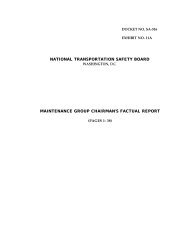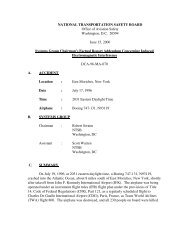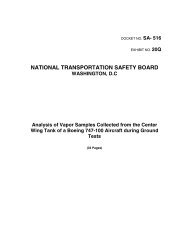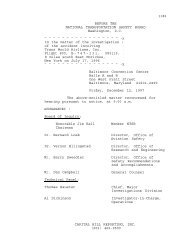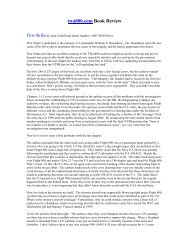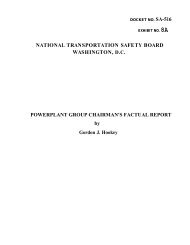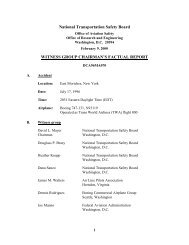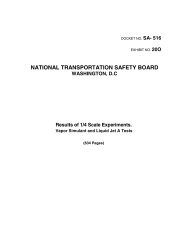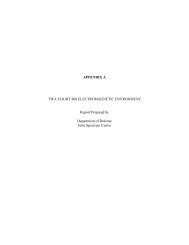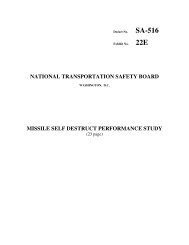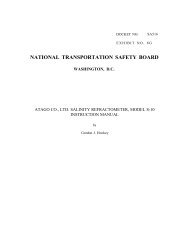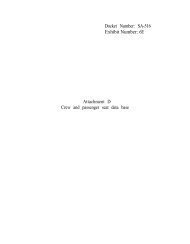Electrical Short Circuit/Arcing of Aged Aircraft Wiring
Electrical Short Circuit/Arcing of Aged Aircraft Wiring
Electrical Short Circuit/Arcing of Aged Aircraft Wiring
Create successful ePaper yourself
Turn your PDF publications into a flip-book with our unique Google optimized e-Paper software.
Figure 15. Example <strong>of</strong> a strong arcing event.Strong <strong>Arcing</strong>Strong <strong>Arcing</strong> events were characterized by an active bright flash or glow that continuedfor a up to a second or more (Figure 15) with an intense electrical hum or crackling. The arc cancause much collateral damage to the insulation <strong>of</strong> adjacent wires, some <strong>of</strong> which becameinvolved in the event. Strong arcing was <strong>of</strong>ten terminated with tripping <strong>of</strong> the circuit breaker.The difference between the oscillogram <strong>of</strong> a flash and a strong arcing event is that thesame voltage arc waveform is repeated continuously in the arc at each half cycle for the duration<strong>of</strong> the short circuit. The phase to phase voltage at the beginning <strong>of</strong> an arc is shown in Figure 16 .The current in this arc started out in the range <strong>of</strong> 65 amperes (peak). After the other wires(including the phase C wire) became involved in the arc the current increased to peaks <strong>of</strong> 120amperes. Power peaks were found <strong>of</strong> up to 15 kW (Figure 17) and a total electrical energydissipated <strong>of</strong> about 5 kilojoules (kJ) .The magnitudes <strong>of</strong> the power peaks in the strong arcing event shown in Figure 17 areabout a factor <strong>of</strong> 2 higher than those found in the flashing event previously discussed becausemore wires were involved. Also different is the arc waveform is repeating continuously forhundreds <strong>of</strong> cycles in a strong arcing event, as compared to one to ten or twenty cycles for aflashing event. This increases the time in which energy is dissipated in a strong arcing event.<strong>Electrical</strong> <strong>Arcing</strong> <strong>of</strong> <strong>Aged</strong> <strong>Aircraft</strong> Wire.Lectromechanical Design CompanyReport No. N191-RPT4AU99 August 12, 199913



